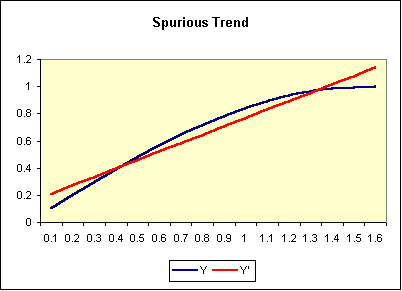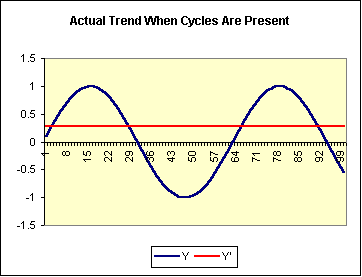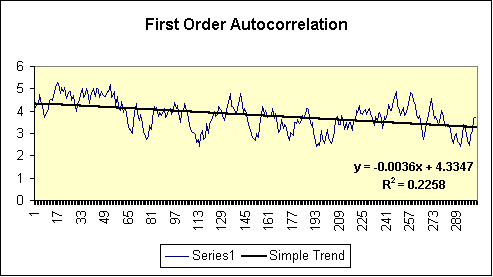Follow Up on Hurricanes and Global Warming
In the comments to my post on the misleading headlines trying to tie Anthropogenic Global Warming to Hurricanes, there was a comment I wanted to address. Dean over at Today’s Democracy has a post looking at data on hurricanes over time. He even has a nifty chart.
A quick glance would make it look like the claim that global warming is responsible for hurricanes is problematic. After all, there are fewer storms right? Well, yeah, but that is what this research also noted. The research has claimed that while the total number of storms has declined (slightly), the severity of the storms has increased…or more accurately that the number of severe storms has increased. So this isn’t inconsistent with Dean’s data.
Another problem with Dean’s data is that it looks at only those hurricane’s that strike the U.S. while the research in question looks at hurricane’s on a global scale (yes, I know hurricanes in other parts of the world are called typhoons and cyclones), but apparently what is actually going on is pretty much the same. So it is problematic to use a subset of the global data to make statements at the global level.
Now all that being said, there are still some reasons to doubt that Katrina is a product of global warming. First, hurricane frequency and severity is cyclical. Apparently back in the 1920’s hurricanes were pretty bad. Was that global warming too? I have read that hurricane’s come in a 20 to 30 year cycle as well. Could that be part of what is going on? One of the things I have noticed about scientists engaged in global warming research is that they seem to love simple linear trend statistical models. The problem is that if the data you are looking at is cyclical and you don’t have a long enough time span you could get a spurious trend (that is fancy talk for finding a trend that doesn’t exist). The following pictures demonstrates the problem.


Only with a long enough time series can you spot this problem unless you have some reason before hand to suspect a cycle. Further, cycles may not be nice and periodic like the ones in the graph. El Nino is cyclic, but its periodicity is not well behaved like the sine function above. Same thing with the economy.
Another problem with simple linear trends is when there is autocorrelation present in the data. Autocorrelation (a.k.a. serial correlation) is when the error term in the current period is related to the error term in the previous term (actually this is called first order autocorrelation, and yes there is higher orders of autocorrelation). In this case, one can get a trend that is spurious as well. The following picture demonstrates this problem,

So the tendency to use the simple linear trend to show perceived trends in the data to members of the media and public could very well be misleading. Sure it makes for nice and simple to understand discussion, but the real process underlying what is actually going on is being hidden, in short it has the potential to be misleading.
Another problem is that while there are hypotheses that are being put forward and developed that deal with the impact of global warming on hurricanes, it is somewhat suspicious to think that warming that is going to happen in say another 40 to 50 years is driving hurricanes today. As far as I know, hurricanes are not forward looking. Instead of anthropogenic global warming, this strikes me as anthropomorphic global warming.
So I think out of all the people who worked on the recent research the best comments are from professor Peter Webster,
“But we don’t know a lot about how evaporation from the oceans’ surface works when the winds get up to around 100 miles per hour, as they do in hurricanes,” said Webster, who adds that this physical understanding will be crucial to connecting trends in hurricane intensity to overall climate change.
“If we can understand why the world sees about 85 named storms a year and not, for example, 200 or 25, then we might be able to say that what we’re seeing is consistent with what we’d expect in a global warming scenario. Without this understanding, a forecast of the number and intensity of tropical storms in a future warmer world would be merely statistical extrapolation.”
As well as the comments of Jay Fein,
“Basic physical reasoning and climate model simulations and projections motivated this study,” said Jay Fein, director of NSF’s climate and large scale dynamics program, which funded the research. “These results will stimulate further research into the complex natural and anthropogenic processes influencing these tropical cyclone trends and characteristics.”
Or in short: Interesting result, there may be a relationship with global warming, but we need to do lots more research before we can speak with any degree of certainty on the subject.






Steve,
Thanks for the reference. I do not think what you are presenting is inconsistent with my analysis at all. I think the analysis you have added is quite valuable.
I conpletely agree with the cyclical nature, that is very clear even in the subset. Yes, I admit mine was a subset, but I think a consistent subset.
Every day one sees a commercial on television showing some automobile company “proving” how much better their car is than its competetors car. This also applies to such item as cleaning sprays, laundry soap and cold remedies.
These “Global Warming” people sort of remind you of these commercials. They spend millions of dollars trying to prove their point of view and have engaged in this environmental propanganda for years. They get a few takers like the TV commercial people do, but most people just change channels and go about their everyday chores.
The only difference between the two,(TV commercials and environmentalist) is that the TV commercial people dont get mad if you don’t believe them. The environmentalist go into a chanting fir of rage when you do so little as question them about their so called “proof”
Everyone has been exposed to these environmntalist whackos claims for so long now that most no one believes a word they say.
It has now come to light that 20 years ago it was a wetlands environmental whacko group that went to court and stopped the construction of a flood gate that would have prevented the flooding of NEW ORLEANS.
If you think they don’t get mad, Watch the whacko comments after they read this.
It doesn’t make me mad Herb, it just makes me lament the human condition.
This chart shows evidence of cyclic changes in hurricane activity over the last century or so.
http://www.nhc.noaa.gov/gifs/decost1.gif
It is part of this report.
http://www.nhc.noaa.gov/pastdeadly.shtml?
I haven’t done the math, but just eyeballing it indicates about 10 more years of intense storms.
Hurricanes* September 13, 2005
“The engine driving these cycles is called the Atlantic Multidecadal Oscillation, or AMO. Scientists say it has triggered drought in the western United States while spawning hurricanes in the Atlantic.
“At a time when some are theorizing that global warming may be the reason for more intense hurricane seasons, climatologists say the AMO is the real culprit.”
—–
Not saying warming is not happening (seems Mars and other places are warming), just it is not [yet] affecting weather to much effect.
Thunderbird:
http://www.globalwarming.org/article.php?uid=877